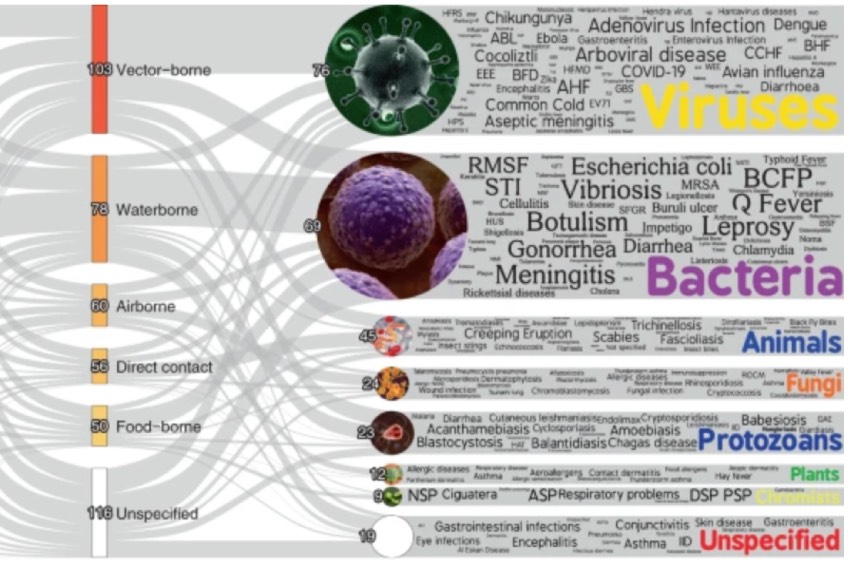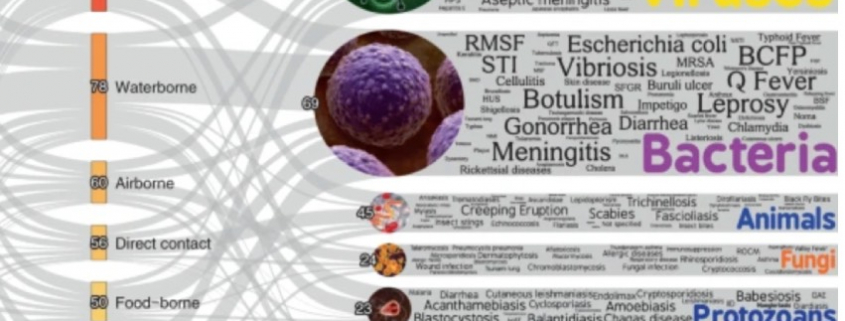Over half of infectious diseases can be aggravated by climate change

Graphic shows connections between climate hazards and infectious diseases. Copyright: Nature Climate Change
A research published on the Nature Climate Change website, by scientists at the University of Hawaii, states that 58% (218 of 375) of infectious diseases worldwide were exacerbated by one or more of the following climate hazards: warming, drought, heat waves, forest fires, extreme precipitation, floods, storms, sea level rise, biogeochemical changes to the ocean and land cover.
“The ongoing emission of greenhouse gases (GHGs) is intensifying numerous climatic hazards of the Earth’s climate system, which in turn can exacerbate human pathogenic diseases,” the authors state. “The societal disruption caused by pathogenic diseases, as clearly revealed by the COVID-19 pandemic, provides worrisome glimpses into the potential consequences of looming health crises driven by climate change.”
The paper notes that “the conclusion that climate change can affect pathogenic diseases is relatively well accepted, the extent of human vulnerability to pathogenic diseases affected by climate change” had not yet been fully quantified. It is increasingly recognized that “the emission of GHGs has consequences on a multitude of climatic hazards of the Earth’s system”. For example, warming, heatwaves, droughts, wildfires, extreme precipitation, floods, sea level rise and so on. And also types of transmission: “vector-borne, airborne, direct contact and so on, that can be affected by these hazards”, states the study.
With few exceptions, the authors continue, “past studies about the impact of climatic hazards on human pathogenic diseases have commonly focused on specific groups of pathogens (for example, bacteria, viruses) and hazards (for example, warming, precipitation, floods)”.
This failure to integrate available information, the study says, “prevents the quantification of the full threat to humanity posed by climate change as it relates to pathogenic diseases.” In this work, the authors “attempt to fill this gap by applying a systematic approach to screen the literature for the set of interactions in which climatic hazards have been linked to human pathogenic diseases”.

 Nature Climate Change
Nature Climate Change
Leave a comment